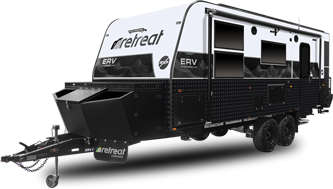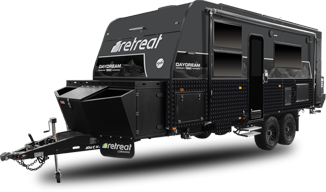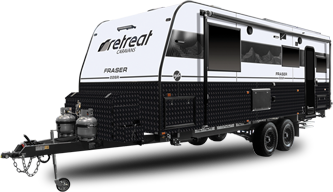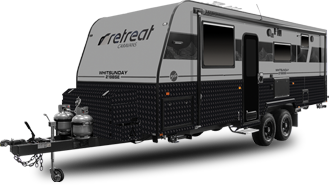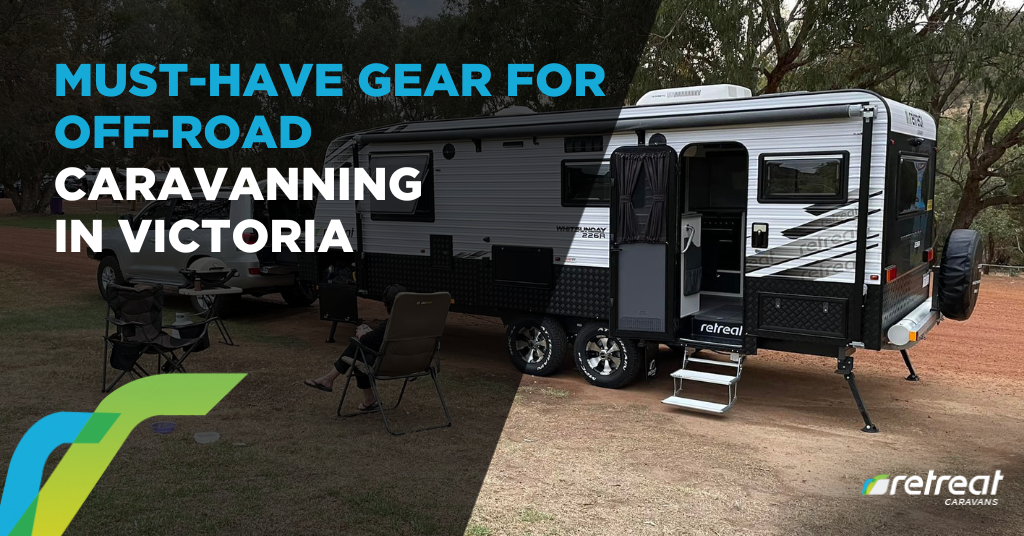
Must-Have Gear for Off-Road Caravanning in Victoria
Off-road caravanning in Victoria isn’t just a weekend getaway. It’s full of rocky tracks, creek crossings, bush climbs and long days without a soul in sight. That’s the adventure, and it’s what makes this kind of travel special. But it’s also why you need the right gear before you head out.
Whether you’re crossing the High Country or heading into the Otways, being prepared can mean the difference between a smooth trip and one that turns into a rescue job. More travellers are turning to off-grid caravans that can handle this kind of travel, and the gear you pack plays a huge role in how well your caravan performs when things get rough.
Here’s what you’ll want to have on board before you roll out.
Suspension and Tyres Built for Rough Tracks
Victoria’s off-road routes put serious pressure on your rig. Corrugations, steep climbs and loose gravel can wear out weak suspension fast. If your setup isn’t built to handle uneven ground, you’ll feel every bump—and your gear might not survive the trip either.
Independent suspension gives each wheel room to move. This keeps the ride stable and helps avoid damage to the chassis. Add a reinforced frame and shock absorbers, and you’ve got a base that holds up in rough terrain.
Tyres need to be just as tough. All-terrain tyres with deep tread and thick sidewalls give you better grip on loose surfaces. They also protect against sidewall cuts from rocks, which can end a trip real quick if you don’t have a spare.
The kind of upgrades often listed as essential gear for off-grid caravans usually start with these basics—because without good suspension and tyres, the rest of your kit won’t matter much.
Power Systems That Keep You Off-Grid Longer
When you’re not near power or town services, your energy setup takes over. Your fridge, lights, water pump, phone and even your heater all depend on it. So if you want to stay off-grid for more than a couple of days, your power system needs to be reliable.
A common setup includes lithium batteries, solar panels and an inverter. Lithium gives you more usable power than lead-acid and charges faster. Solar panels on the roof charge while you’re parked, and a DC-to-DC charger tops things up while you drive. An inverter lets you run standard 240V appliances from your battery.
A 200Ah lithium battery paired with 300W of solar is a strong starting point. It’s enough to run a fridge, charge devices and power your lights without worry. Many of the better accessories to enhance your off-road adventure work best with a solid power system backing them up.
If you plan to park off the grid for more than a couple of nights, it’s smart to monitor your battery status daily. A solar setup that’s too small means you’ll be running out of power when you need it most.
Water Storage and Filtration Solutions
You won’t find many taps once you’re deep into the Victorian bush. That makes your water setup one of the most important systems in your caravan. Drinking, washing, cooking—it all relies on clean, accessible water.
Most setups include dual tanks, each with their own pump and filter. The best systems also have water level sensors so you’re not guessing how much is left. Water filters protect you from bacteria and dirt, especially when using creek or dam water.
In places where access to clean water isn’t guaranteed, like many camp spots in the Great Dividing Range, a backup jerry can or two can help stretch your supply. With the right system, you can even treat surface water for drinking, though boiling is still a smart second step.
Many travellers find these setups useful when working through a checklist for your off-road caravan trip, especially when planning routes with no service stations or campgrounds nearby.
Recovery Gear That Gets You Unstuck
Off-road tracks aren’t always predictable. You’ll hit deep ruts, get caught in soft mud or face slippery slopes after rain. Even experienced drivers get stuck now and then, so the gear you carry for recovery matters.
Basic recovery gear includes snatch straps, shackles, traction boards, a shovel and a tyre deflator. With this kit, you can self-recover from most bogs. Traction boards help you get moving by giving your tyres something to grip. Lowering your tyre pressure with a deflator increases surface contact and helps in sand or mud.
A real example? A small caravan got bogged in the remote sections of Gippsland after a rainstorm. With traction boards and a bit of shovel work, the owner was back on the move in under an hour. Without the gear, they would have needed outside help—which isn’t always easy to get.
Make sure your vehicle and caravan both have rated recovery points. Never attach straps to tow balls or bumpers not designed for recovery.
Communications and Navigation Tools
Most off-road locations in Victoria won’t give you mobile reception. Once you’re out past the last town, the phone signal usually drops off fast. That’s why having backup communication and navigation tools is essential.
A UHF radio is handy for chatting with other travellers or convoy vehicles. It’s also used by park rangers and emergency services. Handheld GPS units and offline maps help you find your way when your phone loses signal. And a satellite messenger can be a lifeline in emergencies.
Using UHF is common in convoy travel, especially in the High Country where narrow tracks need careful coordination. Most people tune to channels 18 or 40 to stay in touch without stepping on other conversations.
Offline apps like ExplorOz or Hema are useful and work well when paired with a mounted GPS system. They can track your route, mark fuel stops and even list campsites nearby.
Kitchen and Cooking Setup for the Bush
Good food keeps spirits high on the road. And when you’re deep in the bush, your cooking gear needs to be simple, reliable and tough.
Slide-out kitchens are popular for off-road caravans. They save space and make outdoor cooking easy. A two-burner gas stove can handle just about any meal. A 12V fridge keeps things fresh without relying on ice.
Many setups also include pantry storage, a prep bench and waste management—all packed into one drawer or hatch. It’s easy to eat well with a setup like this, whether you’re cooking next to a river in the Otways or making breakfast near Mt Buffalo.
Having everything in one spot cuts down setup time too. After a long day of driving dirt roads, it’s nice to cook a quick feed without pulling half the van apart.
Sleeping, Showering and Comfort Essentials
Being off the grid doesn’t mean giving up comfort. Your sleeping setup, climate control and bathroom features turn a basic caravan into a real home on wheels.
A queen mattress, roof vent and good insulation make sleep easy. Diesel heaters are great for cold nights, especially in alpine areas. An internal ensuite gives you privacy and makes life easier when camped in the middle of nowhere.
A skylight adds natural light and helps with airflow. And if you’re staying put for a few days, these little comforts help the caravan feel less like a tin box and more like a retreat.
When you’re far from town, a hot shower and a warm bed are more than just luxuries—they help keep your trip going longer.
Security Gear for Remote Travel
Remote travel also means fewer eyes around. That’s great for peace and quiet, but it can leave your caravan more exposed to theft or break-ins when you’re off hiking or away from camp.
Simple steps help here. A GPS tracker can show your van’s location if it goes missing. Wheel clamps and deadbolts stop quick grab-and-go theft. Motion-activated lights and alarms add another layer of protection.
If your caravan is parked somewhere like a lookout near Lake Eildon or along a trailhead in the High Country, it pays to know it’s secure while you’re away for the day.
The more time you spend off-grid, the more useful these quiet layers of security become.
FAQs
1) How much water should I carry for off-road caravanning in Victoria?
It depends on your trip length and route. For two people, 120 to 150 litres is a safe minimum. That covers drinking, washing and cooking for a few days. If you’re travelling to areas like the Wonnangatta Valley or across the Mallee, where water sources are limited, you may want extra jerry cans. A filtration system helps too. It means you can use creek or dam water if needed. Just remember, boiling is still the safest step before drinking untreated water. Track your usage daily and top up where you can.
2) What tyres are best for Victorian off-road terrain?
All-terrain tyres are ideal for mixed tracks across Victoria. They handle gravel, mud and steep climbs better than highway tyres. Look for deep tread and strong sidewalls. Brands that focus on durability are worth the extra cost. If you’re travelling in wet or boggy areas, mud-terrain tyres offer even more grip. Keep your tyre pressure right for the surface. Lower it for sand or soft ground. Don’t forget your spare, and make sure your jack and wheel brace are ready to go.
3) What kind of solar setup do I need for off-grid caravanning?
Most setups start with 300 watts of solar and a 200Ah lithium battery. That’s enough for a fridge, lights and devices for a few days. Add a solar regulator to manage charging. A DC-to-DC charger helps top up from your car’s alternator while driving. Use a battery monitor to check charge levels daily. Weather can be unpredictable in parts of Victoria, so don’t count on sun every day. A small generator or portable solar blanket adds backup power if your panels fall short.
4) Is a UHF radio really necessary in Victoria?
Yes. Phone coverage disappears fast once you leave built-up areas. A UHF radio gives you a way to communicate with other travellers or call for help nearby. Most travellers use channel 18 or 40. A 5-watt unit with an external antenna works best. Even when camping alone, a UHF can alert you to track closures, weather updates or convoy chatter. If you’re travelling solo in remote areas, pair it with a PLB or satellite communicator for emergencies.
5) What’s the best way to store gear inside my caravan?
Keep heavy items low and over the axle to avoid sway. Use labelled tubs and drawers so you can find things fast. Wall pouches are handy for small tools and cables. Roof storage works well for soft items like bedding. Pantry drawers near your kitchen save time when cooking. Tools and recovery gear should be near the door or in external hatches. The less time you spend digging through gear, the more time you spend enjoying the trip.
Gear Up and Go: Get Ready for the Tracks Ahead
Off-road caravanning in Victoria demands more from your setup than a quick weekend park stay. It asks for gear that holds up in wild conditions. The equipment covered here gives you the freedom to explore deeper, stay longer and handle the bush with confidence.
This isn’t just about comfort. It’s about function, safety and peace of mind. Whether it’s better tyres, reliable water systems or stronger communication tools, each piece of gear plays a part in making your trip smoother.
Victoria has some of the best off-road spots in the country. With the right setup, you’ll be able to see them all.
To build a van that’s ready for this kind of travel Retreat Caravans offers some of the most capable off-grid caravans on the market. They’re built for this terrain—and for travellers who don’t stop when the road ends. See below for our full range of caravans, all carefully designed with you in mind:



